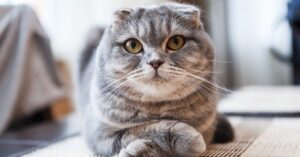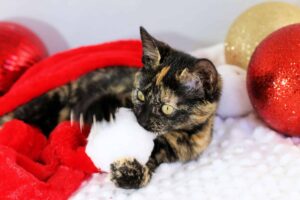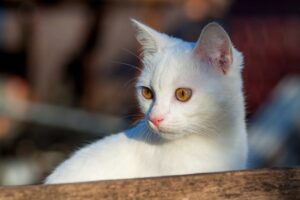Cats, members of the Felidae family, are among the smallest carnivores domesticated by humans. Their retractable claws help them keep their balance, catch prey, and defend themselves. A hallmark of domestic cats is their skull structure, which still bears the sharp canine teeth inherited from their wild ancestors. Despite their cuddly appearance, cats are skilled hunters, equipped with a keen sense of smell and excellent hearing. They’re also among the earliest animals to be domesticated.

Cats have a wide range of physical, behavioral, and sensory traits that set them apart. While many people can easily identify a domestic cat, here are some characteristics that define them:
-
Warm-blooded mammals: As mammals, cats have fur, give live birth, and nurse their young.
-
Retractable claws: One of their more unique features, cat claws stay hidden when not in use, protecting them from wear. Most cats have five claws on each front paw and four on each back paw.
-
Independent hunters, social companions: Cats usually hunt alone, but they’re far from solitary. They enjoy the company of other cats, people, and even other pets. Mother cats are particularly protective of their young.
-
Vocal communication beyond kittenhood: While many adult animals become less vocal, cats continue to “meow” throughout their lives. This sound mimics a human baby’s cry, which may explain why it grabs our attention so effectively.
-
Live birth: Female cats (queens) give birth to live young, called kittens, often encased in an amniotic sac that the mother consumes after birth. Kittens rely on their mothers for about 8 weeks.
-
Quick reflexes: Cats have an impressive ability to land on their feet, thanks to the “righting reflex.” They can reorient themselves mid-air from as little as a 3-foot drop.
-
Night vision: A structure called the tapetum lucidum helps cats see in near-darkness, needing only about 15–20% of the light humans do. Kittens are born with their eyes closed and take time to fully develop vision.
-
Limited color perception: Cats aren’t colorblind, but their vision is mostly limited to blues and yellows. Reds and greens are harder for them to distinguish.
-
Sensitive hearing and smell: Cats hear a wide frequency range (500 Hz to 32 kHz) and have a strong sense of smell, enhanced by their olfactory system. This plays a big role in social and mating behaviors.
-
Sharp teeth: Cats have specialized jaws and long canines suited for catching prey. While their molars aren’t ideal for chewing, their bite is still powerful.
-
Meat-eaters: As obligate carnivores, cats require a meat-based diet and a certain amount of protein daily. Some plants and vegetables can be toxic to them.
-
Digitigrade movement: Cats walk on their toes, moving their legs on each side in unison. This stealthy gait helps them sneak up on prey.
-
Tongue papillae: Cats have rough tongues covered with keratinized, backward-facing hooks. These help with grooming, but also cause hairballs when swallowed fur accumulates.
Common Cat Coat Patterns

Cat coats vary widely in color, texture, and pattern. These six patterns are among the most common:
-
Tabby: Recognized by stripes, spots, and a signature “M” shape on the forehead. Tabbies can have white bellies, paws, and chests, with base colors often brown, gray, or orange.
-
Tortoiseshell: These cats—mostly female—feature a blend of black and orange, sometimes with hints of brown or gold. Male torties are rare and usually sterile.
-
Color-point: Darker coloring on the ears, paws, tail, and face. Siamese cats are a classic example. Their coats often darken with age.
-
Bicolor & Tricolor: Bicolors have white and one additional color. Tricolors (often called calicos) usually include white, black, and red/orange. Tricolor cats are typically female.
-
Solid: These cats are a single color without patterns—commonly white, black, or gray.
Other coat types include harlequin (mostly white with large patches), locket (a white patch on the chest), mitted (white paws), and van (white body with color on the head and tail). Even hairless breeds like the Sphynx may have faint skin patterns.
Recognized Cat Breeds

The International Cat Association (TICA) recognizes 73 standardized cat breeds, ranging from short-haired hunters to long-haired lap companions. Below is a sample of these breeds, including origin, coat type, and common patterns:
-
Abyssinian – Ethiopia | Short coat | Ticked tabby pattern
-
American Bobtail – USA | Semi-long coat | All patterns
-
Bengal – Asia/USA | Short coat | Spotted, marbled, or rosetted
-
Birman – Burma/France | Semi-long coat | Mitted color-point
-
Bombay – USA/Burma | Short coat | Solid black
-
Maine Coon – USA | Semi-long/long coat | All patterns
-
Persian – Iran/Europe/USA | Long coat | All except color-point
-
Siamese – Thailand/Europe/USA | Short coat | Color-point
-
Sphynx – Europe/Canada | Hairless | All patterns
-
Ragdoll – USA | Long coat | Color-point, mitted, bicolor
-
Turkish Van – Turkey | Semi-long coat | Van pattern
-
Russian Blue – Russia | Short coat | Solid blue
…and many more.
Whether you’re drawn to sleek shorthairs, curly-coated rexes, or elegant longhairs, the diversity of cat breeds offers something for every feline fan.
